#wrangell-st elias national park & preserve
Explore tagged Tumblr posts
Text
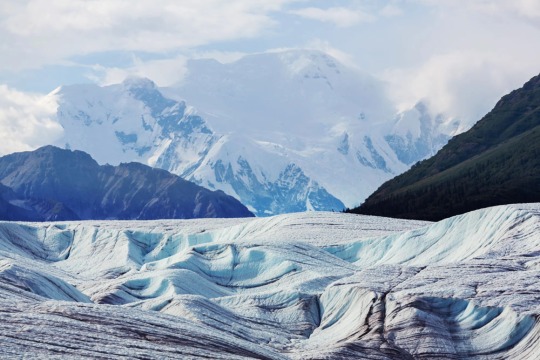
Wrangell–St. Elias National Park & Preserve is a vast example of arctic wilderness.
Photo by High Fliers/Shutterstock
#high fliers#photographer#wrangell-st elias national park & preserve#glacier#national park#landscape#arctic wilderness#nature
14 notes
·
View notes
Text
1. Acadia National Park, Maine
2. American Samoa National Park, American Samoa
3. Arches National Park, Utah
4. Badlands National Park, South Dakota
5. Big Bend National Park, Texas
6. Biscayne National Park, Florida
7. Black Canyon of the Gunnison National Park, Colorado
8. Bryce Canyon National Park, Utah
9. Canyonlands National Park, Utah
10. Capitol Reef National Park, Utah
11. Carlsbad Caverns National Park, New Mexico
12. Channel Islands National Park, California
13. Congaree National Park, South Carolina
14. Crater Lake National Park, Oregon
15. Cuyahoga Valley National Park, Ohio
16. Death Valley National Park, California & Nevada
17. Denali National Park, Alaska
18. Dry Tortugas National Park, Florida
19. Everglades National Park, Florida
20. Gates of the Arctic National Park, Alaska
21. Gateway Arch National Park, Missouri
22. Glacier Bay National Park, Alaska
23. Glacier National Park, Montana
24. Grand Canyon National Park, Arizona
25. Grand Teton National Park, Wyoming
26. Great Basin National Park, Nevada
27. Great Sand Dunes National Park, Colorado
28. Great Smoky Mountains National Park, Tennessee & North Carolina
29. Guadalupe Mountains National Park, Texas
30. Haleakalā National Park, Hawaii
31. Hawai’i Volcanoes National Park, Hawaii
32. Hot Springs National Park, Arkansas
33. Indiana Dunes National Park, Indiana
34. Isle Royale National Park, Michigan
35. Joshua Tree National Park, California
36. Katmai National Park, Alaska
37. Kenai Fjords National Park, Alaska
38. Kings Canyon National Park, California
39. Kobuk Valley National Park, Alaska
40. Lake Clark National Park, Alaska
41. Lassen Volcanic National Park, California
42. Mammoth Cave National Park, Kentucky
43. Mesa Verde National Park, Colorado
44. Mount Rainier National Park, Washington
45. New River Gorge National Park and Preserve, West Virginia
46. North Cascades National Park, Washington
47. Olympic National Park, Washington
48. Petrified Forest National Park, Arizona
49. Pinnacles National Park, California
50. Redwood National Park, California
51. Rocky Mountain National Park, Colorado
52. Saguaro National Park, Arizona
53. Sequoia National Park, California
54. Shenandoah National Park, Virginia
55. Theodore Roosevelt National Park, North Dakota
56. Virgin Islands National Park, United States Virgin Islands
57. Voyageurs National Park, Minnesota
58. White Sands National Park, New Mexico
59. Wind Cave National Park, South Dakota
60. Wrangell—St. Elias National Park, Alaska
61. Yellowstone National Park, Wyoming, Montana & Idaho
62. Yosemite National Park, California
63. Zion National Park, Utah
9 notes
·
View notes
Text

Arctic Ground Squirrel Wrangell-St. Elias National Park & Preserve, Alaska
Arctic ground squirrels are highly opportunistic feeders. They have a widely varied diet which includes a snack smorgasbord of stems and leaves, roots, fruits, seeds, flowers, grasses and sedges, and other green or woody plants, as well as mushrooms. Arctic ground squirrels are members of the family Sciuridae, which includes marmots, chipmunks, prairie dogs and squirrels. They are the only ground squirrel species in Alaska.
via: National Park Service
25 notes
·
View notes
Note
silly question, do bb! clan cats know about planes? or helicopters?
i’m not quite sure how it works in the UK since i’m an american, but in the US park rangers and scientists fly over parks in helicopters fairly often for a bunch of reasons like transport to & from research stations or search & rescue along with a bunch of others. so i’d imagine the clans would see them at least every once in a while of the lake is a nature reserve (i think? i could be misremembering)
also depending on how low planes fly they’re LOUD. do the clan cats think theyre weird loud birds?
They probably know about them because of when they lived in Chelford, the White Hart Woods were near a large town. But I don't think they see them as often at Sanctuary Lake. Hengest, the largest town, is a fair distance west.
I am also American, but I don't think they use as many choppers to get around their wooded areas. The parks are TINY ASS over there, like, look at this absurd shit;
The largest preserve in Lake District, Wild Ennerdale National Nature Reserve, 9th largest in England, is 3,000 hecatares
The largest nature reserve in England, The Wash, is 8,800 hecatares.
The 15th largest nature preserve in the USA, Joshua Tree Park, is 321,788 hecatares. That's 36 The Washes.
The largest nature preserve in the USA, Wrangell St. Elias National Park, is 5,332,054 hecatares, making it larger than Denmark
So... not sure if choppers are necessary unless someone needs to be air-lifted out for medical assistance. They're really not that large.
And in either case, the planes are pretty high up. I think the Clan cats believe they're a very strange type of water bird, with the fat body and tiny wings. The Sundrown Patrol probably comes up with a theory that they're probably flying to a different ocean, and they must nest far offshore.
Tigerheart has a different theory, when the train thunders past. "they're the same species and i hate both of them"
40 notes
·
View notes
Text
Exploring the Vast Wilderness of Wrangell–St. Elias National Park and Preserve
Exploring the Vast Wilderness of Wrangell–St. Elias National Park and Preserve Wrangell–St. Elias National Park and Preserve, nestled in the eastern region of south-central Alaska, stands as the largest national park in the United States. Covering an astonishing 13.2 million acres, it’s a wild and barely touched landscape offering a plethora of activities for adventure seekers and nature lovers alike. From mountain peaks that scrape the sky to broad valleys carved by ancient glaciers, the park is a marvel of natural beauty and grandeur. Read the full article
1 note
·
View note
Text

Discover the Wonders of USA National Parks! 🌲
📌 From the towering redwoods in California’s Redwood National Park to the unique geothermal features of Yellowstone, the USA’s national parks showcase incredible ecological diversity.
📌Many national parks, like Mesa Verde and the Everglades, preserve the history and cultures of the people who lived there long before they were parks.
📌Established in 1872, Yellowstone is not only the first national park in the USA but also the first in the world!
📌Wrangell-St. Elias National Park in Alaska is the largest in the USA, covering over 13 million acres—larger than Switzerland!
📌The Great Smoky Mountains National Park is home to more than 19,000 documented species, with scientists believing there are thousands more yet to be discovered.
➢ Repost from @_iloveusa
.
.
➢ Alliance @america_states @enjoy_la_ @latinbrazil
.
.
#conexaoamerica
#usa #unitedstates #nationalpark
1 note
·
View note
Text
Experience Alaska's Living Cultures
From dog sledding to meeting local artisans, there are countless ways to experience Alaska’s diverse cultures year-round.
— By Christina Nuñez

Experience Alaska's living cultures! Embark on an overland journey like no other, traveling over Alaska's terrain via dog sled. Dog sledding, or mushing, has a long history in Alaska: Originating as transportation for Alaska Native cultures, it went on to become the official state sport in 1972. Throughout the state, visitors can join a range of dog sled tours, from jaunts lasting a couple of hours to multiday backcountry camping excursions. In the summer, rides typically take place on wheeled carts, but if you’re craving the sledding experience, you can helicopter to a glacier and glide over snow and ice behind a team of dogs under the midnight sun.
In addition to tours, kennels offer demonstrations that reveal how sled dogs and their mushers prepare for long-distance trips. Rangers at Denali National Park and Preserve—the only national park with a kennel of sled dogs—hold daily demos from May to September. Depending on the time of year, you might also be able to catch a sled dog race: The legendary Iditarod Trail Sled Dog Race from Willow to Nome has a ceremonial start in downtown Anchorage every March, and the Yukon Quest International Sled Dog Race in February runs between Fairbanks and Whitehorse. CANNON PHOTOGRAPHY LLC, ALAMY

Learn about Alaska's aviation history! Thousands of Alaskans live in remote communities without road access. For many of these communities, small aircraft have long been a critical way to get supplies. Back when Alaska Airlines began in the 1930s, flights weren't scheduled—they took off when the plane was full. Today, traveling by bush plane or seaplane is an integral part of Alaskan culture.
The state's pioneering history of flight is on display at the Alaska Aviation Museum, located on the world's largest seaplane base, Anchorage's Lake Hood. Here, you'll be able to see more than 25 vintage aircraft, watch planes being restored, and get a pilot's-eye view in a full-immersion flight simulator. If you're eager to get off the ground, check out one of the state's many flightseeing and helicopter tours. Whether you take a short flight or a full-day trip, flightseeing is a great way to see some of Alaska's less-visited treasures, such as Wrangell-St. Elias National Park. FRANS LANTING, NATIONAL GEOGRAPHIC IMAGE COLLECTION
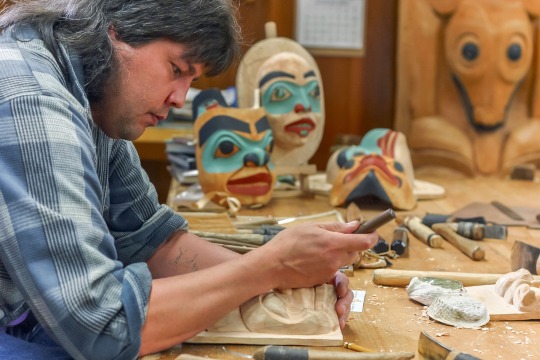
Tour Sitka National Historical Park! Located on Baranof Island in southeast Alaska, Sitka National Historical Park's natural beauty is punctuated by its signature feature: a collection of totem poles from the Tlingit and Haida people. They sit on ancestral land of the Tlingit Kiks.ádi clan, which is also the site of an 1804 battle between the clan and Russian invaders who eventually wrested control of Sitka. Americans acquired Alaska from Russia in 1867.
Nearly 40 years later, Tlingit and Haida tribes donated 15 totem poles to be exhibited at the Louisiana Purchase Exposition in St. Louis, Missouri. Most—but not all—made it back to Alaska. Today, visitors to the park can explore the mile-long Totem Trail, with its 18 Tlingit and Haida totems. A self-guided walking tour of the trail offers a window into the rich history of these carvings and the living cultures they represent. Local artisans such as Tlingit carver Tommy Joseph are also on-site throughout the week working on various totem carving projects and available to answer questions about their craft. PATRICK J. ENDRES, GETTY IMAGES

Explore Ketchikan on a local-led tour! Once the site of a Tlingit summer fish camp, Ketchikan lies at the southern end of the Inside Passage and is the first port of call for ships heading north, earning it the nickname “Alaska’s First City.” Distinguished by its colorful waterfront buildings and the fact that it boasts the largest number of standing totem poles in the world, Ketchikan draws fishing buffs, nature lovers, and those wanting to experience Alaska Native culture and art. You'll find collections of totems at the Totem Heritage Center, Totem Bight State Historical Park, Saxman Totem Park, and Cape Fox Lodge, as well as dotted throughout downtown Ketchikan.
Learn about Ketchikan's remarkable history and art on a local-led walking tour, such as Where the Eagle Walks run by Tlingit Elder Joe Williams, Jr. With your guide, you might wander the pedestrian boardwalk on Creek Street, learn about the salmon that migrate through the area's waters, or watch Tlingit totem carvers at work in nearby Saxman Village. BARCOS, ALAMY
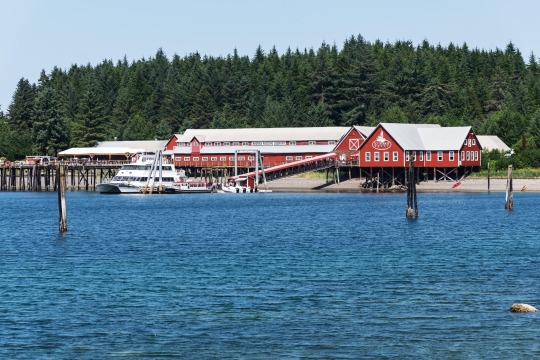
Visit Hoonah and Icy Strait Point! Over a century ago, Icy Strait Point was the site of a salmon cannery. Today, the striking red building is a "port for adventure" owned and operated by a local Alaska Native corporation, Huna Totem. Located about 30 miles west of Juneau on Chichagof Island, Icy Strait Point is a prime attraction in the town of Hoonah, Alaska’s largest Tlingit village. The restored cannery, which opened in 2004, is now home to a museum and 1930s cannery line display.
After soaking in the area's history, you can tour Hoonah’s many shops and restaurants, explore the surrounding wilderness, and embark on local tours. If you're a thrill-seeker, zoom down from the peak at Hoonah Mountain on the the state's longest zip line. For a more relaxed adventure, head to the Yaakw Kahidi Cultural Center to learn about Tlingit customs and traditions such as hand-carving dugout canoes. NAUM CHAYER, ALAMY

Experience wildlife, history, and culture on Kodiak Island! The second largest island in the United States is full of opportunities to spot wildlife, particularly bears and whales. Kodiak National Wildlife Refuge, established in 1941, is home to 3,500 Kodiak brown bears, which visitors can view from a safe distance on guided tours available through local lodges and camps. The Kodiak Brown Bear Center & Lodge, owned by the Alutiiq people, is one of several sightseeing operators located in the refuge. Offshore, local charter boats will take you whale watching, though you may also be able to see them from atop cliffs or on beaches.
In downtown Kodiak, check out the Alutiiq Museum. The museum features exhibits on local archaeology as well as the culture and art of the Alutiiq/Sugpiaq people, who have lived in Alaska's southcentral and southwest coastal areas for over 7,500 years. A short walk away you'll find the Kodiak History Museum. Its many stories begin with the building itself: Built in 1808, it was at various points a private home, event space, and boarding house. GETTY IMAGES
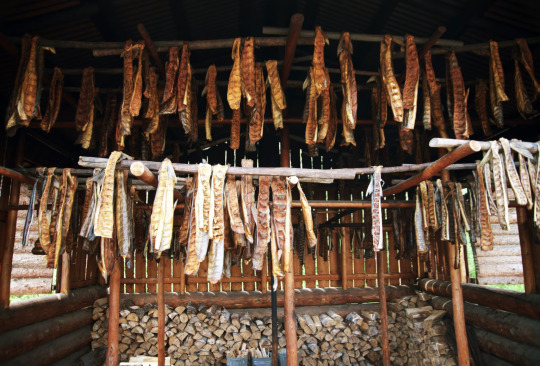
Discover Alaska's locally sourced food culture! The idea of "eating local," or sourcing food close to home, takes on a new dimension in Alaska. Home to over 12,000 rivers, three million lakes larger than five acres, and over 46,000 miles of shoreline, Alaska has an unparalleled bounty of fresh seafood. Some of the many species that inhabit Alaska waters include crab, shrimp, Pacific halibut, and salmon.
Don’t miss the chance to try salmon from an Alaska smokehouse, where filets are soaked in brine, hung out to dry, and smoked for hours over a wood fire. Historically, smokehouses indicated clan ownership of a river during the summer fishing season and are a longstanding way that Alaska Native cultures have preserved salmon. Restaurants like Duck Point Smokehouse in the Tlingit village of Hoonah allow visitors to indulge in this culinary tradition.
Other locally sourced products to keep an eye out for include birch syrup and meats such as elk, bison, and reindeer. Take a culinary tour or cooking class to sample and learn more about these foods. Also be sure to visit some of the state's many craft breweries, wineries, and distilleries. JMP TRAVELER, ADOBE
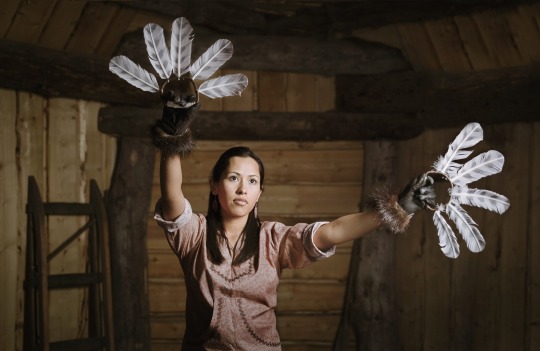
Visit the Alaska Native Heritage Center! Alaska is home to over 229 federally recognized tribes—and one of the best ways to learn about Alaska’s diverse living cultures is at the Alaska Native Heritage Center (ANHC) on Dena’ina lands in Anchorage. A unanimous vote of the Alaska Federation of Natives in 1987 kicked off the effort to build the center, which opened in 1999 and has welcomed visitors since. In 2021, the Ford Foundation recognized the ANHC as one of America’s Cultural Treasures.
The center includes six life-size villages, which offer a window into traditional ways of life for Alaska’s Iñupiat, St. Lawrence Island Yupik, Athabascan, Eyak, Haida, Tsimshian, Tlingit, Unangax̂, Alutiiq/Sugpiaq, Yup’ik, and Cup’ik peoples. Enjoy a self-guided tour of the villages’ dwellings and artifacts, but be sure to leave time to attend one or more of the many events at the center’s main complex, the Gathering Place. On any given day, you might be able to catch the astounding athletics of Alaska Native games, watch a traditional dance performance, learn words and phrases from one of Alaska’s 300 dialects, share teatime with an Elder, or join a guided tour of the exhibits at the Hall of Cultures. KILIII YUYAN
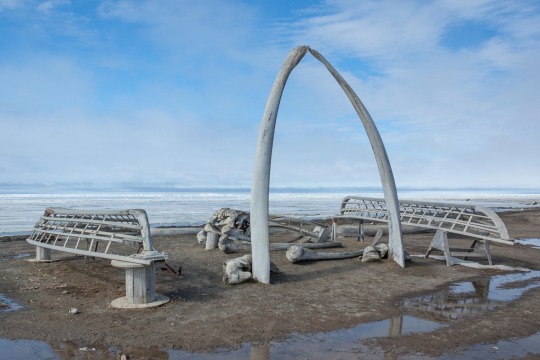
Visit Utqiaġvik, the northernmost U.S. town! Utqiaġvik is a town of great beauty and great extremes. In U.S. territory, it's as far north as you can get. From May 12 to August 2, the sun never sets. And from November 18 to January 23, darkness reigns 24 hours a day. Even in summer, a trip to the beach demands fortitude if you plan to go near the water, since the frigid Arctic Ocean waters hover in the low 30s Fahrenheit.
Drawn by the migration of Arctic bowhead whales, humans have inhabited Utqiaġvik for at least a millennium, with evidence of former residents going back as far as 1,500 years. Now one of the largest Iñupiat settlements in Alaska, Utqiaġvik was known as Barrow until 2016, when residents voted to revert back to the town's traditional name.
While you're visiting "the rooftop of the world," don't miss the Iñupiat Heritage Center, which features exhibits, a library, and events and demonstrations led by locals. Other spots to see include the "Gateway to the Arctic," a massive whalebone arch on the beach near the Cape Smythe Whaling and Trading Station that commemorates the town’s relationship to whaling, and the Birnirk National Historic Landmark archaeological site, which marks evidence of habitation by the Birnirk culture from about 500 to 900 A.D. MICHELLE HOLIHAN, ADOBE
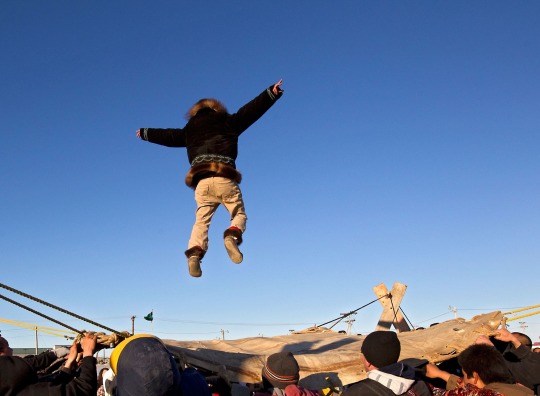
Attend a festival or market! Year-round, Alaska hosts unforgettable events that offer a chance to experience regional customs, shop for locally made goods, and cheer on competitors in races and games. The Festival of Native Arts held each year in February or March is just one of many Alaska Native festivals and events. Since 1973, the festival has brought together artists, musicians, and storytellers at the University of Alaska Fairbanks to share workshops and performances.
Around the June solstice, Utqiaġvik holds the whaling festival of Nalukataq, a celebration that includes launching people into the air with a group-held blanket. "This cultural celebration is one of the best ways to experience the true meaning of sharing and really highlights the value system of the Iñupiat," writes Tara Sweeney, who grew up in Utqiaġvik. Other events include June's biennial Celebration festival in Juneau and the four-day World Eskimo-Indian Olympics, held in Fairbanks in July. VICKI BEAVER, ALAMY
1 note
·
View note
Photo
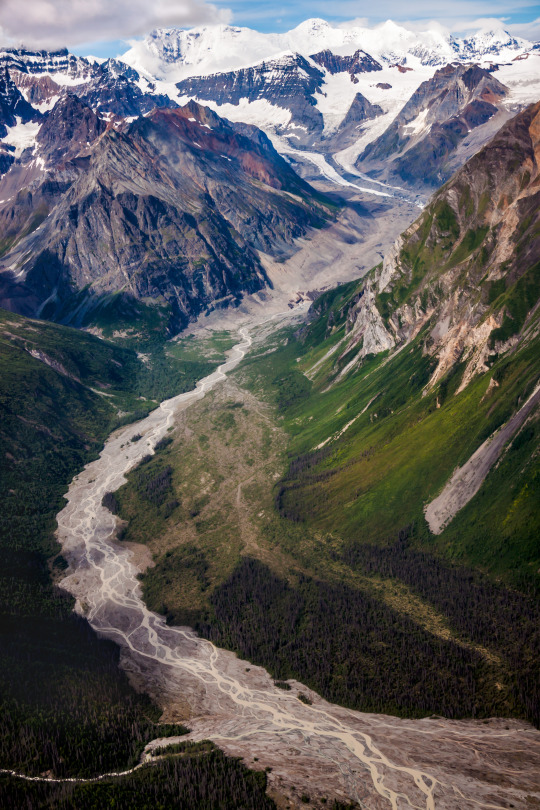
Wrangell–St. Elias National Park and Preserve - Alaska - USA (by Dany Sternfeld)
#Wrangell–St. Elias National Park and Preserve#Alaska#US#USA#United States#North America#America#Nature#Landscape#outdoor#View#Viewpoint#Travel Photography#Travelling#Travel#Tourism#Holiday#Urlaub#Reisen
541 notes
·
View notes
Photo

Too big to be ignored, Wrangell-St. Elias National Park & Preserve is the same size as Yellowstone National Park, Yosemite National Park and Switzerland combined. Rising from colorful ocean inlets to the second-tallest mountain in America -- 18,008 foot-tall Mount Saint Elias -- our largest national park is home to mountains, volcanoes, glaciers, forests, rivers, lakes, wildlife and people living off the land as they have for centuries. To sum it up, this park is epic! Photo by Neal Herbert, National Park Service.
#wrangell-st. elias national park#wrangell st. elias national park and preserve#wrangell-st. elias#national park#national park service#NPS#national park week#nationalparkweek#alaska#usinterior#public lands#outdoors#america's great outdoors#nature#mountains#icy bay#mount st. elias#mount saint elias#glacier#amazing view#awesome experience#gorgeous scenery#blue water#travel#Adventure
759 notes
·
View notes
Photo

Ogives on the Gates Glacier (via National Park Service, Alaska Region)
NPS photo by Neal Herbert
#glacier#ice#ogives#geology#landscape#Gates Glacier#Wrangell–St. Elias National Park and Preserve#Alaska
15 notes
·
View notes
Photo

This blue glacial pool can be found at Wrangell — St. Elias National Park and Preserve, Alaska, which is the largest national park covering over 13 million acres. Wrangell-St. Elias includes an International Biosphere Reserve and is part of a UNESCO World Heritage Site. Not only is it the largest national park in the United States, it is larger than nine U.S. states. It also has the second highest elevation of all national parks within the USA.
by Nate Verhanovitz / NPS
#nate verhanovitz#photographer#national park service#wrangell#st elias nationa park preserve#alaska#nature
4 notes
·
View notes
Text
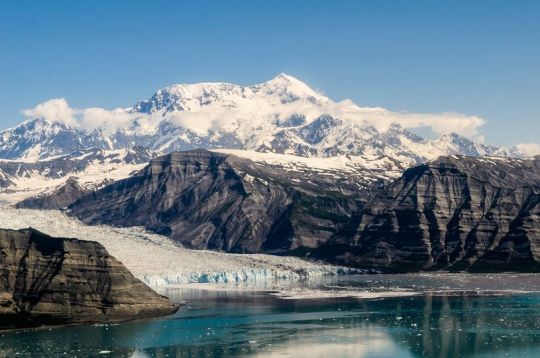
Wrangell - St Elias National Park & Preserve, in Alaska, is the largest national park in the United States, at over 13 million acres.
photograph by B. Petrtyl | National Park Service
24 notes
·
View notes
Text
Wrangell-St. Elias National Park & Preserve
Abandoned mine in Alaska
650 notes
·
View notes
Text
Exploring the Vast Wilderness of Wrangell–St. Elias National Park and Preserve
Exploring the Vast Wilderness of Wrangell–St. Elias National Park and Preserve Wrangell–St. Elias National Park and Preserve, nestled in the eastern region of south-central Alaska, stands as the largest national park in the United States. Covering an astonishing 13.2 million acres, it’s a wild and barely touched landscape offering a plethora of activities for adventure seekers and nature lovers alike. From mountain peaks that scrape the sky to broad valleys carved by ancient glaciers, the park is a marvel of natural beauty and grandeur. Read the full article
1 note
·
View note
Photo

international mountain day
#© victor s. brigola#brigola#international mountain day#mountain day#mount drum#wrangell st elias national park and preserve#wrangellmountains#alaska#usa#blue#white#green#landscape#landscapephotography#fuji x100t
28 notes
·
View notes
Text
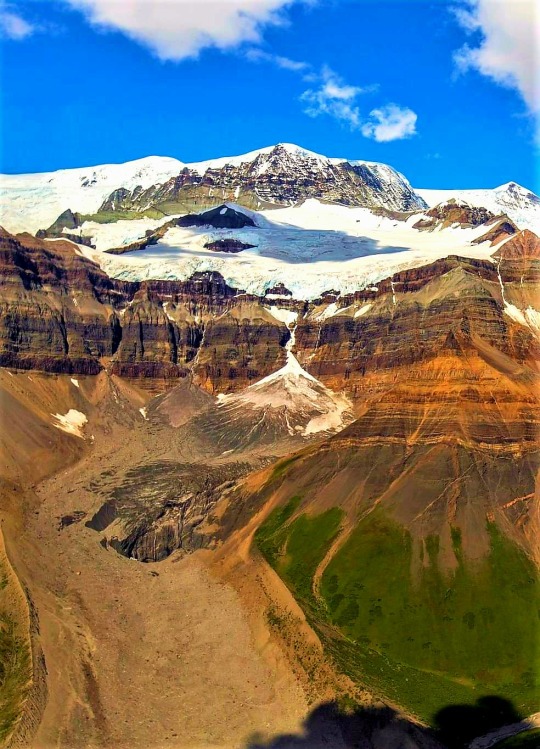
Wrangell–St. Elias National Park and Preserve, Alaska, USA
24 notes
·
View notes